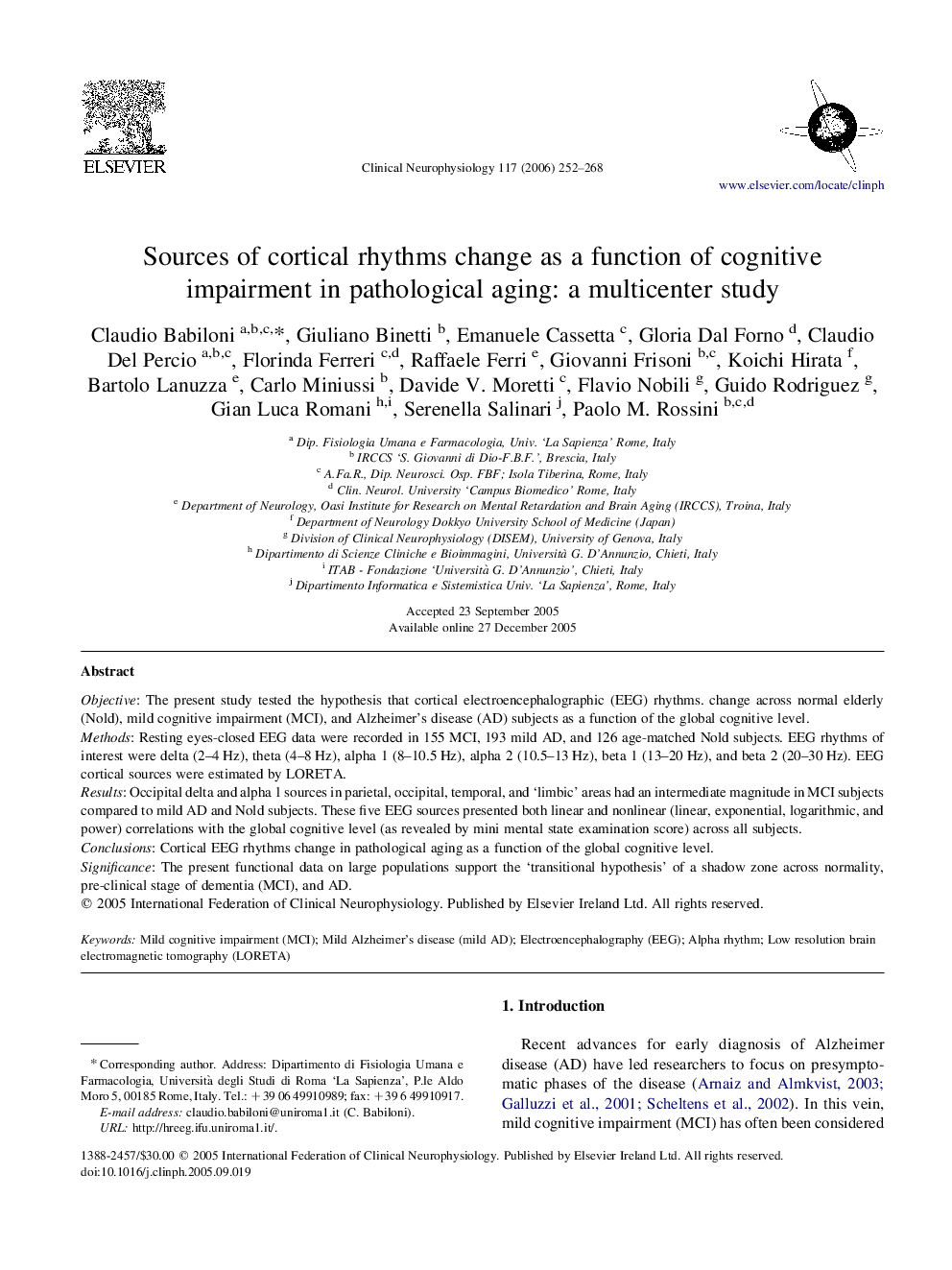| Article ID | Journal | Published Year | Pages | File Type |
|---|---|---|---|---|
| 3048131 | Clinical Neurophysiology | 2006 | 17 Pages |
ObjectiveThe present study tested the hypothesis that cortical electroencephalographic (EEG) rhythms. change across normal elderly (Nold), mild cognitive impairment (MCI), and Alzheimer's disease (AD) subjects as a function of the global cognitive level.MethodsResting eyes-closed EEG data were recorded in 155 MCI, 193 mild AD, and 126 age-matched Nold subjects. EEG rhythms of interest were delta (2–4 Hz), theta (4–8 Hz), alpha 1 (8–10.5 Hz), alpha 2 (10.5–13 Hz), beta 1 (13–20 Hz), and beta 2 (20–30 Hz). EEG cortical sources were estimated by LORETA.ResultsOccipital delta and alpha 1 sources in parietal, occipital, temporal, and ‘limbic’ areas had an intermediate magnitude in MCI subjects compared to mild AD and Nold subjects. These five EEG sources presented both linear and nonlinear (linear, exponential, logarithmic, and power) correlations with the global cognitive level (as revealed by mini mental state examination score) across all subjects.ConclusionsCortical EEG rhythms change in pathological aging as a function of the global cognitive level.SignificanceThe present functional data on large populations support the ‘transitional hypothesis’ of a shadow zone across normality, pre-clinical stage of dementia (MCI), and AD.
